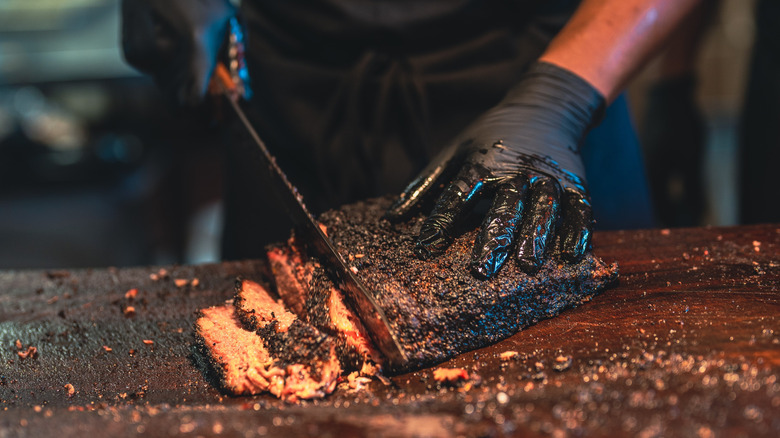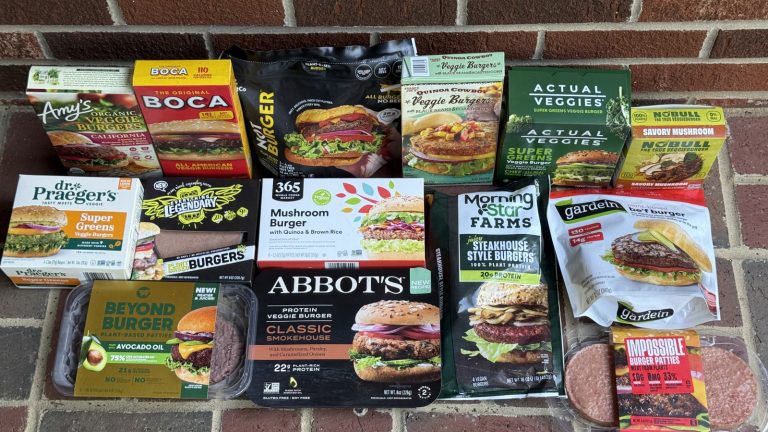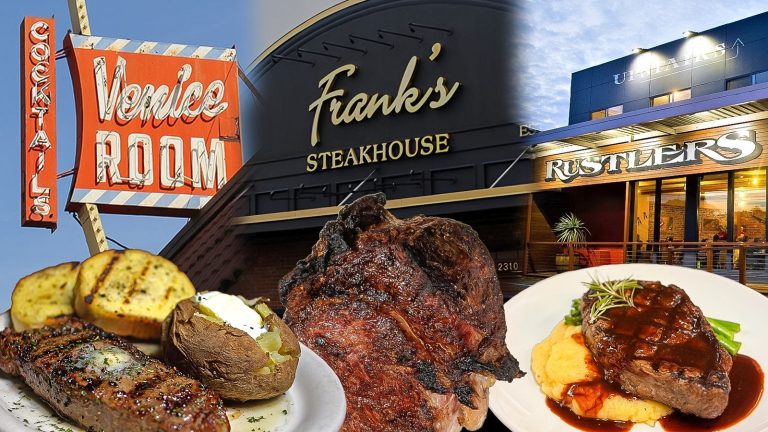A proper barbecue is always a truly tasty experience, and with so many styles and flavors to experience, you’re sure to find something you love. America is notorious for its barbecue offerings and signature styles that vary from state to state, but other countries — like Korea — have equally famous barbecue chops — pun intended. So what are the differences between these two barbecue styles? Food Republic spoke to Margaret Monahan, vice president of marketing at Vertex Hospitality, parent company of KPOT, to find out more.
While the principles are the same — grilling meat and sometimes veggies — American and Korean barbecues approach flavor, cooking time, and the communal aspects differently. According to Monahan, “Korean BBQ is a common method of cooking Korean cuisine, and it’s based on personal choice and communal dining. It’s at the individual’s pace[;] it’s exactly the ingredient they want, cooked exactly how they want it.”
Meanwhile, American cookouts are often more of an event or communal occasion and are typically based around one or two main entrees. For example, you won’t see individual guests each smoking their own rack of barbecue pork ribs on separate grills in the same backyard; that style is more reminiscent of Korean barbecue. Each barbecue type has its unique flavors and traditions — like Korean barbecue etiquette for eating banchan — that make its dining experience a delight. Not to mention learning about both individually can also open doors to delicious future barbecue flavor combinations. Kimchi-marinated brisket, anyone?
Korean barbecue is an interactive and social experience
Culture is at the root of what differentiates Korean and American barbecue, both in terms of flavor and how the meals are prepared. According to Margaret Monahan, “Korean culture emphasizes the importance of interactive and social dining experiences, where individuals gather around a single setting to cook together.” So even though each guest gets to cook their own food on the grill in front of them, they share the work of cooking, thus making it a social experience in itself. As Monahan said, “Communal eating is at the heart of the experience.”
The food and preparation are also different. Monahan explained, “The built-in electric, gas, or charcoal grill cooks marinated meats (such as bulgogi and pork belly) and seasoned proteins (including mini sausages, pork, chicken, and seafood) in a short amount of time, providing a fast-paced dining experience.” The raw meat is brought to the table in thin-cut, small quantities, so everyone gets their own portion. According to Monahan, “Meats, proteins, and veggies cooked in a Korean BBQ style are often sweet, savory[,] and use umami-rich marinades to achieve the unique flavor.”
They also often appear with traditional Korean sides, known as banchan, like rice and kimchi, as well as sweet dipping sauces to highlight the marinades. You’ll also often see Korean barbecue accompanied by bottles of soju, a clear spirit. Just make sure you know how to drink soju like a local for a truly traditional spread. Korean barbecue is all about embracing the historical customs that surround delicious grilled food.
American barbecue is chameleonic
American barbecue is famous for a reason, as there is much that makes it a special dining experience. “American BBQ differs from Korean BBQ in that meats are [often] smoked or slow-cooked for hours in a smoker or on an outdoor grill,” Margaret Monahan explained. “This type of cooking relies on indirect heat and smoke to infuse the flavors.” The result is that deep, smoky flavor that embeds in the meat and creates a nice outer layer of crust to bite off. “Dominated by tangy and smoky flavors, American BBQ mainly focuses on large, thick cuts that are served in hearty portions,” Monahan added. And, of course, you can’t forget about classic sides like macaroni, corn on the cob, sweet rolls, and greens to round out the meal.
On a personal level, American barbecue can be both highly social and highly individual. As Monahan described, “Backyard cookouts are meant to be enjoyed around the company of others, while attending a barbecue restaurant can be a group or individual event.” Additionally, there is typically one grill master in American barbecues — you likely won’t see six cooks working on the same charcoal smoker at once. Even so, it is still a very communal form of eating as it often invites guests to bring side dishes or desserts to share and accompany the main grilled entree. So while the flavors and cooking approach are certainly different from a traditional Korean barbecue, both center around good food eaten with good people.







